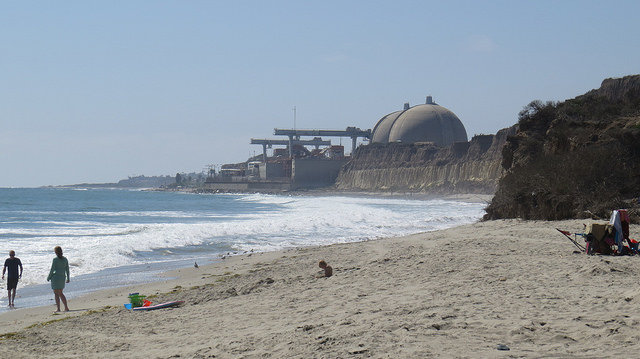When one of California’s two nuclear plants–the San Onofre Nuclear Generation Station (SONGS)–unexpectedly closed last year because of damage to its steam tubes, many clean energy advocates including UCS hoped that the state would replace much of that electricity with generation from renewable resources, as well as increased investments in other carbon-free energy resources, such as energy efficiency, demand response, and energy storage devices. Unfortunately, plans are now in the works to replace most of the SONGS electricity with a new natural gas plant, without a process that gives clean energy resources a chance to compete.

San Onofre’s 2.3 GW of nuclear power generation capacity must be replaced with alternative resources. Photo: Luke Jones
San Diego Gas and Electric (SDG&E) recently filed a plan with the California Public Utilities Commission (CPUC) that contained details on how they would replace the SONGS power. The plan needed to conform to the guidelines set forth by the CPUC (details start on page 141 of the Commission’s decision), which allowed SDG&E to procure up to 800 MW of electrical capacity. At least 200 MW of this must come from “preferred” (aka carbon-free) resources like renewables, energy efficiency, and storage, and the remaining 600 MW could be chosen through a competitive bidding process, although the CPUC said some of this energy could also be picked through a bilateral contract, which means a contract with one project, no competitive bidding.
Instead of allowing all power sources to submit bids in a competitive process for that remaining 600 MW, SDG&E filed an application on Monday to move forward on a contract to build a new natural gas power plant in the City of Carlsbad.
A natural gas power plant built today will continue to spew carbon into the atmosphere for another 30 or 40 years. Building a new plant in Carlsbad, or anywhere else for that matter, locks us into more carbon and air pollution, and the state should be doing everything it can to explore cleaner options before we make that commitment. Perhaps in the end the Carlsbad plant would have won the bid anyway, but we’ll never know because clean energy resources did not even have a chance to compete.
If you are like me, you are proud that California has been a leader in developing clean energy resources for decades. But you also know that to cut our carbon emissions and slow the pace of global warming, we need speed up our transition to clean energy and that continuing to approve new gas plants without strongly considering other options creates liabilities down the road. The CPUC should have been stronger in its direction to require SDG&E to give clean energy resources a chance to compete, and SDG&E should be listening to its consumers, who want to see more clean sources of power providing their electricity. This sentiment was reinforced when the Public Policy Institute of California released a survey on Wednesday demonstrating continued support among Californians for clean energy policies. Until the state and the CPUC forces our utilities to consider clean energy resources when it really matters (not just when it sounds nice), we’ll just end up getting a lot of hot air and new gas.
